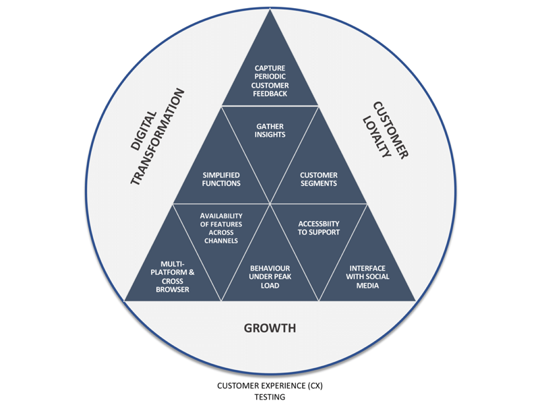The evolution of technology has bought huge transformation among organizations as well as raised the bar of customer expectations.
And in this digital era, wherein everything is changing rapidly, organizations need to have a firm grasp on how to utilize the digital universe to reap maximum benefits. And, when it comes to the banking sector the expectation and experience go hand in hand.
This is one of the primary reason, which triggers banks and other financial institutions to look for innovative ways to improve customer experience and in turn improve the overall conversion.
A Walker study found that by the end of 2020, customer experience will overtake price and product features, as the key brand differentiator. So, it is now widely acknowledged that customer experience truly has the potential to make or break.
Banks are heavily focusing in streamlining customer journey’s. So, where do you begin is the next big question?
Expectation Mapping
Today’s banking industry is exploring ways to get into the minds of their customers by introducing various channels and apps which in turn help them in getting one step closer to their target customers.
They shifted their focus on unfolding all touching points that are necessary to create the ultimate customer experience. Starting from the website, customer support to apps, these are areas where real opportunity exists.
Working on similar lines, “Gartner predicts that by 2021, 75% of software providers will rely on insights embedded from software usage analytics, to aid major product decisions and measure customer delight”.
But the question still remains “Is there a way to understand and measure customer experiences”? Or How do you test customer experiences (CX)?
All these questions have a single approach. It requires a deeper understanding of the organization processes, customer expectations, and product lifecycles.

We have seen the way digital products have evolved immensely, therefore your focus should be towards building the “direct-to-customer” model. To achieve this, an effective customer experience testing strategy should be designed, in line with user goals and business objectives. Let us understand it in detail.
Top 9 things to follow for CX testing
- Gather insights through usage patterns from Production Environment: The whole point of gathering data is to create usable insights that drive changes. To begin with, customer experience architects should create the entire customer journey blueprint. They need to study the end-to-end experience the customer has and accordingly streamline the internal process.
- Functionalities easy to understand and access: Before going live it is important to undergo for usability testing to find out whether your application is customer- friendly or not. Organizations need to tap into real-time data to understand the consumers ever-changing behaviors and incorporate the same for streamlining their CX journey.
- Validate critical functionalities in multi-platforms and cross-browsers: To make sure that your customer has a great experience while using your application without encountering any issue, it is important to do cross browser testing. It helps in verifying whether the application is compatible across different platforms and browsers.
- Involve and test scenarios for different customer segments: To have an effective CX strategy, organizations must test different customer behavior which includes functional and non-functional requirements and aspects. In addition to this, it is also essential to address human behavioral elements such as culture, psychology and emotions It will help in prioritizing the different testing needs- functional, performance, security, access, etc.
- Monitor and test the App/System behavior under peak load scenarios: No matter how many tests you have run, once your application is ready to go live, your application should be analyzed further, under peak load scenario’s. And this can only be done through Load Testing. It is a process of putting stimulated demand on application to check its behavior under various conditions.
- Provisions to capture user/customer feedback in regular intervals and on periodic manner- As the digital world evolves with the advent of new channels or devices, so does customer preferences. That’s why it is important to capture customer changing preferences and implement the same on regular intervals. So, that your application performance meets expectation.
- Interfaces with other social apps and extract/download capabilities: A/B testing, also known as bucket testing, is a standard way to evaluate user engagement or satisfaction. It is widely used to check compatibility with social network sites such as Facebook, LinkedIn, and Twitter to make data-driven decisions. So, before going live, make sure that your front-end and back-end systems are well integrated with seamless coding for better user experience.
- Availability of features across all channels/customer touchpoints: Your application will be only successful if it touches all customer touchpoints. These are integral points, which customers use to interact with your brand, product, service, etc. Carefully studying these touchpoints can help an organization in designing and giving better user and customer experiences.
- Accessibility to Support & Help functions – Lastly, you should pay high dividend towards testing their focal point of customer connect such as chatbots, digital customer support assistants, online help options etc. These platforms need to go through a comprehensive course of usability testing.
The Road Ahead
The digital transformation in the BFSI segment is bound to hit $121.7 billion by 2025 as per Adroit Market research. This means the digital world is going to evolve with the advent of new channels and devices. Therefore, the criticality of customer experience testing becomes a prominent subject with a continuous rigor of quality testing. Once you know your customers well enough, you can use that knowledge to personalize every interaction































